ALGERIA
Plants and Animals

Plants and Animals
Plants and Animals
Plants
Due to the size of the country, the landscapes of Algeria show all the vegetation types found in North Africa. A visit to Algiers' botanical garden Jardin d'Essai du Hamma is highly recommended in that regard. This botanical garden was founded in 1830 and contains one of the largest botanical collections in Africa.
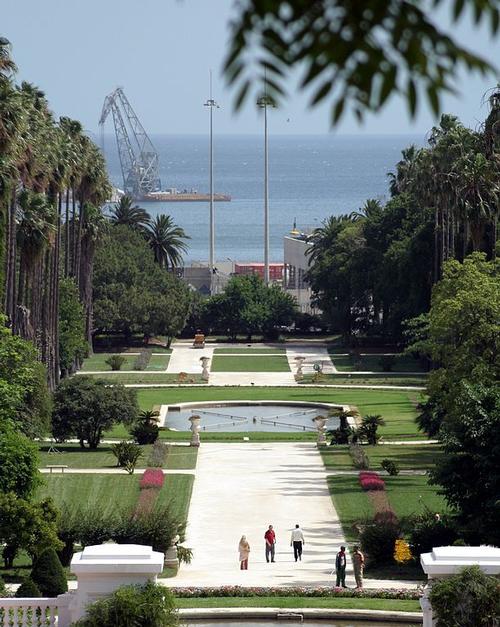 Jardin d'Essai du Hamma, Algeria's largest botanical gardePhoto: Ludovic Courtès CC 3.0 Unported no changes made
Jardin d'Essai du Hamma, Algeria's largest botanical gardePhoto: Ludovic Courtès CC 3.0 Unported no changes made
Approx. 5000 years ago, much of the mountainous coastal region was covered with deciduous and coniferous forests. Cedars, pine, stone and cork oaks grew right up to the surf of the Mediterranean.
<p">As in many places in Africa, the landscape has changed drastically over thousands of years, mainly due to man. By clearing trees for more agricultural land, enormous areas of forests disappeared. There were also many forest fires, including during the War of Independence (1954-1962). Normally nature recovers quite quickly after a fire, but in Algeria new plantings and young shoots were immediately eaten by large goat herds. Since the late 1970s, forests have been planted again in a systematic manner.
New plant species were imported from other regions, such as tropical Africa, Southwest Asia, India and South-America. Thus, the olive tree spread as a characteristic tree throughout the Mediterranean region. This was introduced about 600 BC. by Phoenician merchants in Carthage (Tunisia) and Marsilia (Marseilles), and the Romans often used the olive tree as a border tree. At the time of Alexander the Great's conquests (331-324 BC), rice, cotton and citrus fruits were introduced in the Mediterranean, citrus trees at first even only as ornamental plants. Arab tribes spent between the 7th and 12th centuries AD. date palms, sugar cane and papyrus to North Africa. Even more exotic plants and trees were brought by the Portuguese from East Asia, after rounding the Cape of Good Hope in the 15th century. After 1492, completely new varieties were imported from the 'new world', North, Central and South America, including potatoes, corn, tomatoes, peanuts, paprika, agave, cacti and bougainvillea. From the mid-18th century, under the colonial rule of France, the Canary Islands palm, eucalyptus species and the mandarin tree were introduced.
Trees
The olive tree is one of the longest living cultivated plants, specimens more than a thousand years old are no exception. The fruits of this evergreen tree, with an oil percentage of 30-35%, are harvested between November and March.
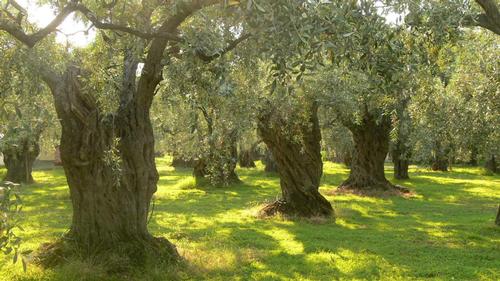 Olive grove, AlgeriaPhoto: Petr Pakandi CC 2.5 Generic no changes made
Olive grove, AlgeriaPhoto: Petr Pakandi CC 2.5 Generic no changes made
Large contiguous coniferous forests are not common anymore in Algeria. Still, conifers such as the Aleppo pine, the maritime pine can still be seen in many places, but more in a solitary environment. Cypresses, including the Atlas cedar, which can also become very old, are also characteristic of the Mediterranean.
Special is the Algerian silver pine, which only occurs in Algeria, especially on the slopes of the Djebel Babor, the second highest mountain in Algeria.
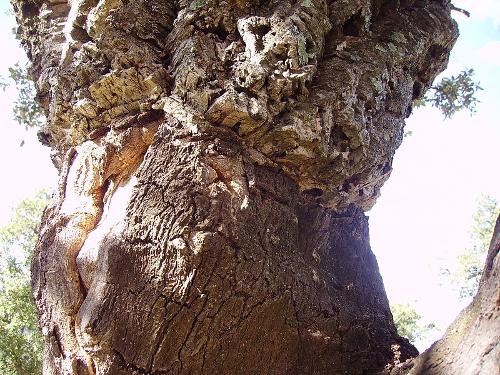 Cork Oak AlgeriaPhoto: Ballista CC 3.0 no changes made
Cork Oak AlgeriaPhoto: Ballista CC 3.0 no changes made
Cork oaks are mainly found in the western Mediterranean, and when they are 15-20 years old one can start 'harvesting' the cork.
The fast-growing eucalyptus tree, about 50 species were introduced around 1850 from Australia, has a smooth, greenish trunk, is often lined with streets and provides plenty of shade.
Macchia of maquis
Macchia or maquis, thriving in a rocky, dry environment, is an evergreen and fairly impenetrable type of vegetation with man-sized (2-4 meters high) trees and aromatic bushes with often small, hard leaves. Typical species for this vegetationtype are the European dwarf palm, the only native palm species, heather broom species and spiny spurge species. If the conditions for the macchia deteriorate, a scrubland vegetation develops with mainly shrubs that do not exceed 1.5 meters, including the kermesik.
Palms
With the exception of the European dwarf palm, all palm species in Algeria come from tropical or subtropical regions such as the Cape region in South Africa or the coastal region of California. The dwarf palm is the only wild palm species native to the Mediterranean. The royal palm, native to South America and the Antilles, can often be found in parks.
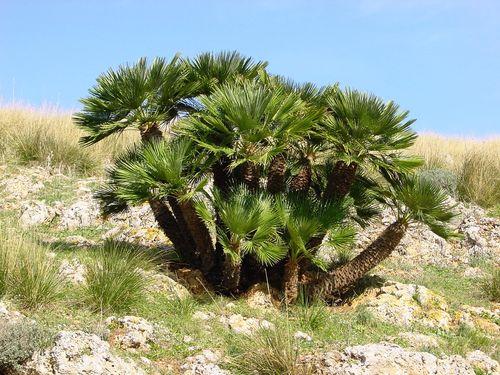 European dwarf palm, the only native palm species of Algeria Photo: Tato grasso CC 2.5 Generic no changes made
European dwarf palm, the only native palm species of Algeria Photo: Tato grasso CC 2.5 Generic no changes made
Fruit trees
The fig tree, which flowers three times a year and bears figs twice a year, is native to western Asia Minor. The crooked, thorny and multi-branched pomegranate tree also occurs as a shrub. The pomegranate forms the basis for grenadine, and the watery, sweet-tasting core of the fruit is eaten as a dessert. Apricots were used in the first century AD. from China via Persia, Armeni to Italy brought. The Arabs ensured the further spread of the apricot, as far as Algeria. Citrus fruits are exported from Southeast Asia and spread India to the rest of the world. Algeria has about 22,000 hectares of mandarin trees in use.
An ancient culture plant is the vine, which originated in the eastern Mediterranean and was spread by the Phoenicians and the Romans. Watermelons came to the countries around the Mediterranean already before Christ. These fruits thrive around Tamanrasset in the south of the Algerian Sahara.
In the culture of the Maghreb, the date palm is a symbol of life. The true date palm (Phoenix dactylifera), which is from Persia and Arabia has been found on the shores of the Mediterranean for 4000 years, making it one of the oldest cultivated plants in the world. The trunk of the date palm grows to a height of 10-30 meters, and the tree annually supplies about 20-50 kg of dates, also known as the 'bread of the desert'. Most dates are harvested from October when the tree is between 40 and 80 years old, and a tree can bear dates for about 100 years.
Dates are also used to make flour, the heart of the tree is used in salads, pressed dates yield 'date honey', the soft date wood is used in construction, mats, brooms, hats, baskets and sandals are made from the fibers of the trees, and the palm leaves are used for fences, among other things. There are about a hundred different types of dates, developed and cultivated over thousands of years, feeding millions of people. Algeria has about 7 million date palms, 6.7 million tons of dates were harvested in 2004, 450,000 tons in Algeria alone. In the entire Maghreb there are about 20 million date palms, 90% of the dates harvested in Algeria are for the local population, only 10% is exported.
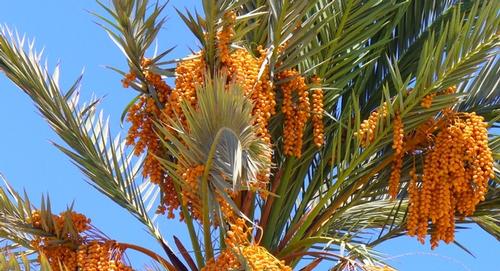 Date palm is full of dates, AlgeriaPhoto: B Simpson Cairocamels CC 3.0 no changes made
Date palm is full of dates, AlgeriaPhoto: B Simpson Cairocamels CC 3.0 no changes made
Flowers and plants
The oleander is a beloved evergreen, but poisonous shrub that is found throughout Algeria. From May to autumn, the oleanders bloom in many colors, from white, rose yellow to dark red.
The coasts of all countries bordering the Mediterranean are impossible to imagine without the beautiful creeper bougainvillea, they bloom from February to late autumn in the colors white, yellow, pink and dark red. The plant is native to South America and was introduced to Brazil for the first time. discovered by the French Admiral Antoine de Bougainville.
Typical steppe plants that occur in Algeria are agave, esparto or esparto grass, opuntia or disc cacti and castor or castor oil tree.
Agaves and disc cacti often together form the secretion between agricultural plots to keep sheep and goats out. Agaves only develop candlestick-like flowers of up to three after 10-15 yearsmeters high. The esparto or esparto grass is a very characteristic steppe plant that thrives on stony, marl-like soil. Esparto grass is used, among other things, to make rope; The fibers are used to make high-quality paper. Disc cacti still grow well on a dry, infertile soil where nothing else can grow. From March to April, the disc cactus bears large yellow flowers, from which fig-like, juicy fruits emerge at the end of August, which, for example, is used to make jam. The castor tree or castor oil tree is actually a shrub, belongs to the spurge family and can grow to a height of more than ten meters in a few years. Seeds of this very old cultivated crop have been found in 4,000-year-old Egyptian graves. Castor oil (castor oil) is pressed from the highly toxic castor oil beans, which is used in soaps, lubricants, perfumes and medicines.
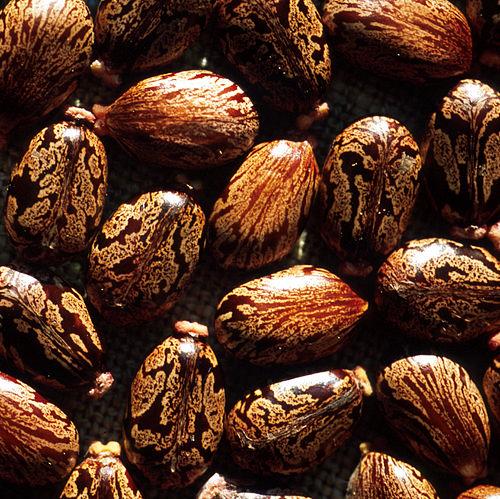 Castor oil beans are poisonous but can be used for many purposes usedPhoto: Schnobby CC 3.0 Unported no changes made
Castor oil beans are poisonous but can be used for many purposes usedPhoto: Schnobby CC 3.0 Unported no changes made
In the Sahara, plants have each developed their own survival technique to defy the drought, because the soil of the Sahara is fertile, but it simply lacks sufficient water. For example, a single shower of rain can make the desert look like a sea of flowers. However, this is only an appearance, because the rain is retained by the plants until enough has fallen and the plant can germinate. The special thing about the seeds of these plants is that plants of the same species germinate under different humidity conditions. Some seeds germinate after one rain onion, others germinate after years. This varied germination keeps the species alive. Other species store moisture in roots or leaves to survive drought and scorching heat. Typical desert plants are the Sahara acacia, tamarisk, sodom apple, bitter melon and the herb cistanche. Special and very rare is the Sahara cypress or 'tarout', a conifer species of which there are only a few hundred in the Algerian Sahara. These trees grow to about 11 meters high and have roots that penetrate up to 60 meters deep into the soil to absorb water. All trees are in a national park that is a UNESCO World Heritage Site. They are among the oldest trees in the world with ages of over 3500 years.
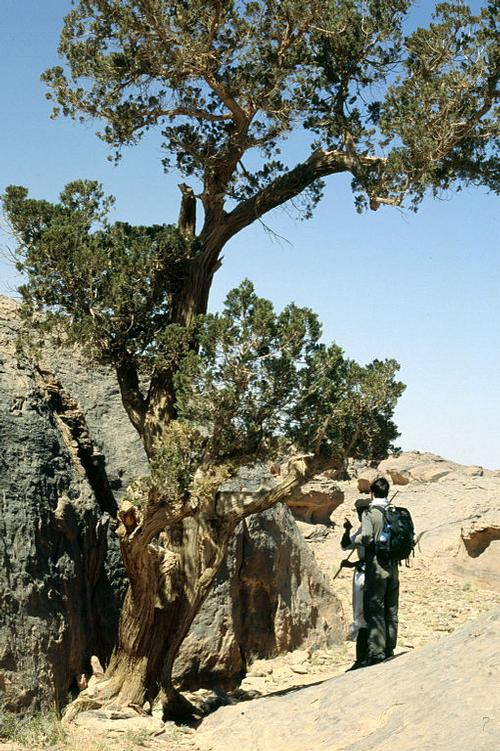 The Sahara cypress is a of oldest trees in the worldPhoto: Gruban CC 2.0 Generic no changes made
The Sahara cypress is a of oldest trees in the worldPhoto: Gruban CC 2.0 Generic no changes made
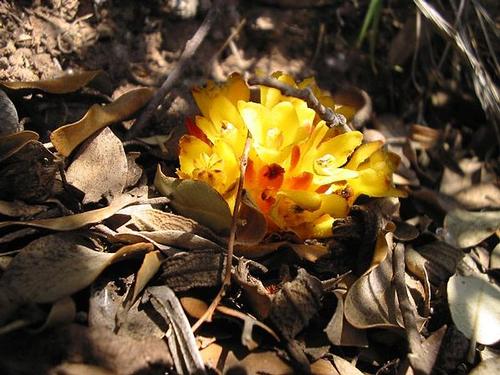 Yellow hypocistPhoto: Bouba CC 3.0 Unported no changes made
Yellow hypocistPhoto: Bouba CC 3.0 Unported no changes made
Animals
Prehistoric petroglyphs by Tassili N'Ajjer, among others, indicate that elephants, giraffes and rhinos once roamed Algeria. At the moment, however, few mammals are left and can only be seen in very remote places. There are fewer than 100 mammal species in Algeria, of which several dozen are endangered in their existence. Species that are still common are gazelles, porcupine, antelope, common or golden jackal, Egyptian ichneumon or Egyptian mongoose, spotted hyena, wolf, wild boar and genet cat.
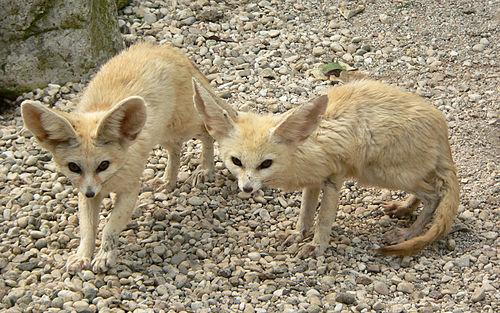 Fennec fox or desert fox, national animal of AlgeriaPhoto: Umberto Salvagnin CC 2.0 Generic no changes made
Fennec fox or desert fox, national animal of AlgeriaPhoto: Umberto Salvagnin CC 2.0 Generic no changes made
In the mountainous areas of the Sahara, the very shy barbary sheep can still be found and the fennec fox or desert fox is perfectly adapted to the harsh conditions. The largest rodent in the Sahara is the North African gundi. In addition, in the Sahara there are also: desert cat, Cape hare and sand fox, dorcas gazelle, tailless Barbary macaque, Sahara cheetah, serval and Mediterranean or common monk seal.
Algeria has about 200 endemic bird species, of which about ten are endangered. Hundreds of millions of migratory birds still fly over the Sahara every year on their way to the warmth of Central Africa. Some complete that grueling journey in just 40 hours, about half dying along the way. Birds encountered in Algeria include lanner falcon, marble duck, muscovy partridge, blue rock thrush, greylag goose, golden eagle, crossbill and black-throated bunting. The desert sparrow is also referred to as 'moula moula' by the Tuaregs and this bird is said to bring good luck if it stays near a Tuareg camp.
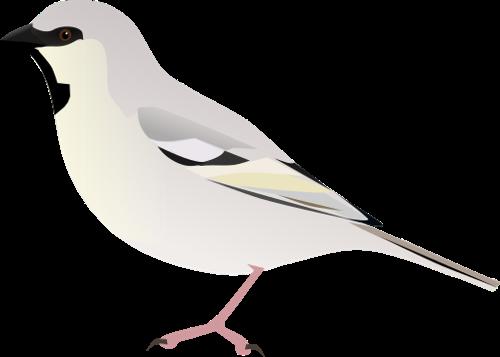 Desert Sparrow or moula moula, AlgeriaPhoto: L.Shyamal CC 3.0 Unported no changes made
Desert Sparrow or moula moula, AlgeriaPhoto: L.Shyamal CC 3.0 Unported no changes made
The Algerian Nuthatch is an endemic passerine bird found only in the mountain forests of the Kabyli region. The Algerian Nuthatch is very similar to the Corsican Nuthatch and was only discovered in 1973. The El-Kala National Park, located between Annaba and the Tunisian border, is an important resting place during the migration for rare water birds such as tufted duck, white-headed duck and white-eyed duck. All heron species of North Africa are also found in this area, with Lac Tonga and the lagoons around El Kala as the most famous locations.
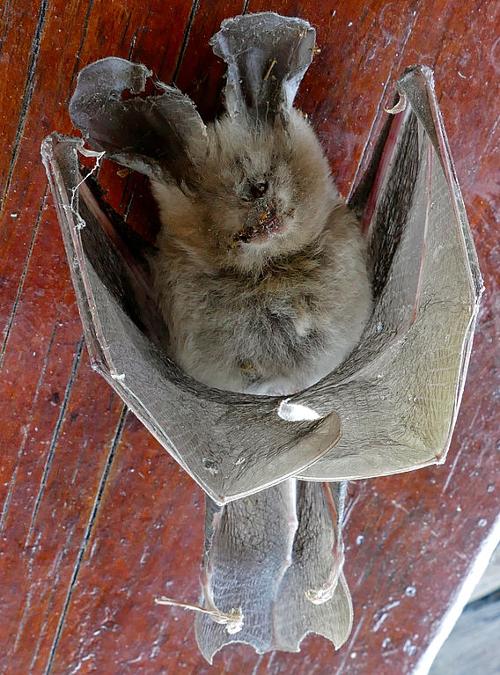 Deceased Theban Splenosed bat, AlgeriaPhoto: Bernard Dupont CC 2.0 Generic no changes made
Deceased Theban Splenosed bat, AlgeriaPhoto: Bernard Dupont CC 2.0 Generic no changes made
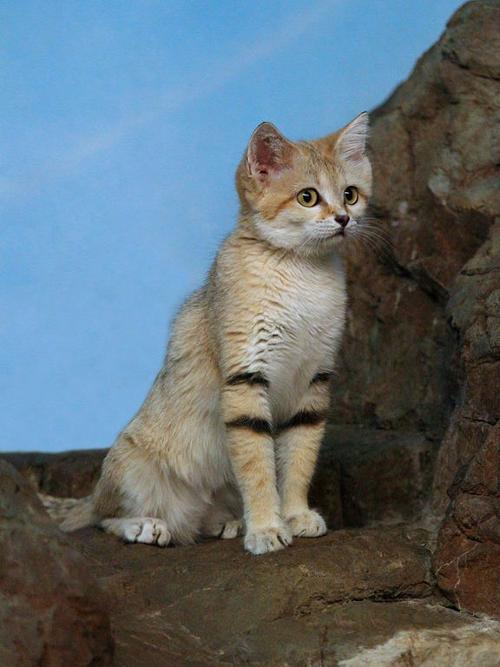 Desert cat or sand cat, AlgeriaPhoto: Greg Hume CC 3.0 Unported no changes made
Desert cat or sand cat, AlgeriaPhoto: Greg Hume CC 3.0 Unported no changes made
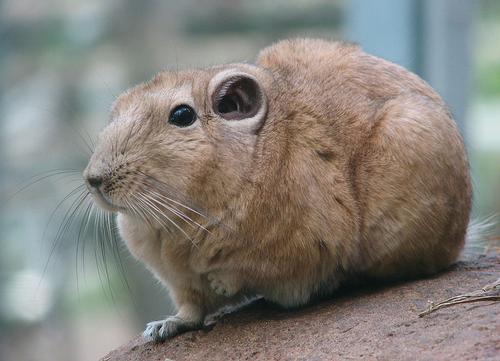 North African goendi, AlgeriaPhoto: Oona Räisänen CC 3.0 Unported no changes made
North African goendi, AlgeriaPhoto: Oona Räisänen CC 3.0 Unported no changes made
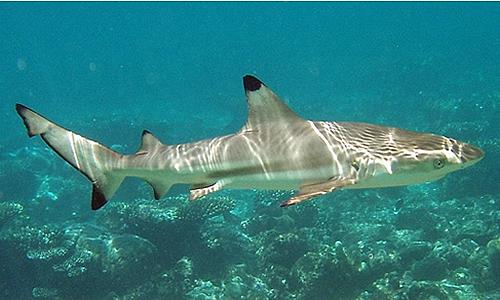 Blacktip Shark, AlgeriaPhoto: public domain
Blacktip Shark, AlgeriaPhoto: public domain
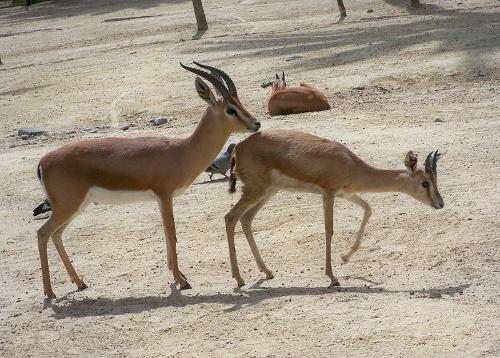 Dorcasgazelles AlgeriaPhoto: Osado CC 3.0 Unported no changes made
Dorcasgazelles AlgeriaPhoto: Osado CC 3.0 Unported no changes made
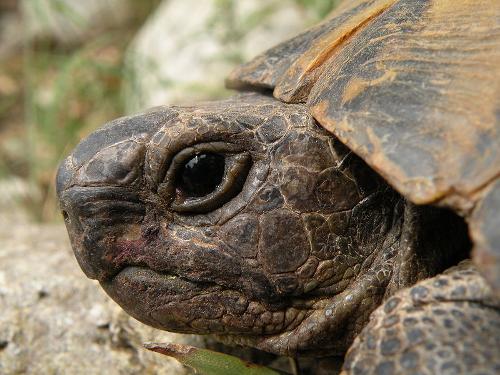 Spurr-tighed Tortoise, AlgeriaPhoto: Moise Nicu CC 3.0 Unported no changes made
Spurr-tighed Tortoise, AlgeriaPhoto: Moise Nicu CC 3.0 Unported no changes made
Sources
Agada, Birgit / Algerien : Kultur und Natur zwischen Mittelmeer und Sahara
Trescher
BBC - Country Profiles
Beker, Michel / Algerije
KIT Publishers/Oxfam Novib
CIA - World Factbook
Elmar Landeninformatie
Ham, Anthony / Algeria
Lonely Planet
Kagda, Falaq / Algeria
Marshall Cavendish
Oakes, Jonathan / Algeria
Bradt Travel Guides
Copyright: Team The World of Info